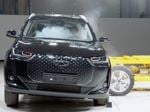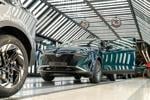All the headline figures for diesel are pointing upwards – the ending of the scrappage scheme (in which most buyers chose small petrol cars) has led to a surge in market share to a new record of 45.2% YTD October.
It seems that the fabled 50:50 split between petrol and diesel is not far away.
However, figures hidden below the headlines show that diesel is more vulnerable than it looks.
Diesel has grown its share partly by dominating large cars – executive and luxury saloons, MPVs and off-roaders – all of which are at least two-thirds diesel.
Now all these segments have seen falls in their diesel proportion for the first time (albeit only fractionally in the case of SUVs).
While overall diesel share has grown because of increased sales in the supermini and lower-medium segments, it is noteworthy that it is declining in its traditional heartland.
The reason is that petrol engines are reducing the economy deficit to diesels, while increasing their cost advantage.
As an example, take the new Ford Ecoboost 1.6 petrol (so far only available in the Volvo S60/V60). In either 150bhp or 180bhp form, it has a CO2 figure of 156g/km, while the 163bhp diesel version has a CO2 figure of 144g/km.
The new petrol engine has reduced its CO2 figure by 20g/km compared to its predecessor and is now less than 10% behind the diesel.
Meanwhile, Euro V regulations requiring the near-complete elimination of particulates at the end of this year is increasing the cost of diesels, while the Euro VI regulations, due in 2015, aimed at oxides of nitrogen, will add yet more cost.
A sign of the times is that Land Rover, which dropped a petrol engine option in the Freelander a couple of years ago, will launch the Evoque with the option of Ford’s 2.0 Ecoboost petrol engine.
The CO2 figure has not been released yet, but expect somewhere around 180g/km for the Powershift auto – about the same as the Freelander 2.2 diesel auto.
Over the next couple of years, there will be a flood of smaller turbocharged petrol engines in the wake of Fiat’s very clever Twin Air (1.0 litre and 100bhp will be a fairly common standard).
These are going to make the additional cost of a 100bhp diesel engine harder to justify.
In the meantime, diesel will continue to grow its overall share but, in 2011, more segments will start to see a decline in the diesel mix.
By the end of next year, expect to see the first signs of a general retreat.












Login to comment
Comments
No comments have been made yet.